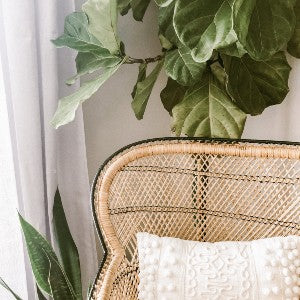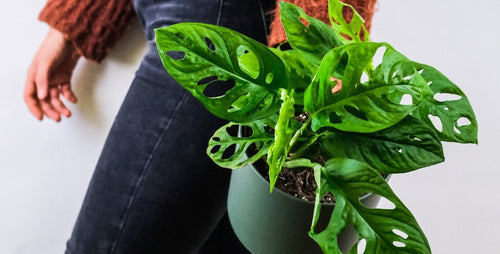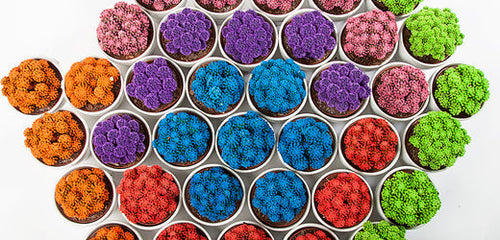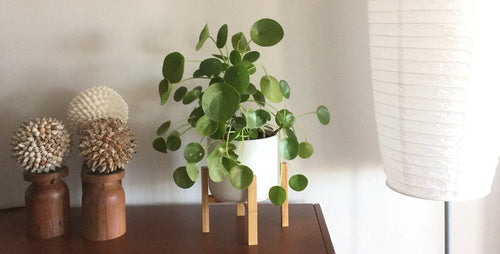
By Karen Weir-Jimerson
Oh houseplants, how delicious you seem to some insects. Most all houseplant pests have a diabolical MO: they suck the juices from the leaves like little vampires. Whiteflies – both the flying adult form and their pupae – also enjoy dining on plant juices.
How do you know you have whiteflies?
The good news is that this plant pest isn’t all that stealthy. If you notice white flying insects around your houseplants, especially when you move or water them, then you have whiteflies. Michelle Opela, Senior IPM Manager at our North Carolina farm, says that once you see them, whiteflies are easy to identify: “Whiteflies are pretty easy, because they are white and they fly,” she laughs.
Although they are super tiny, they are still easy to spot. “Sometimes all it takes is to tap a pot, and if you see anything that flies up, you have them,” she says. And they aren’t hard to differentiate from other pests. “While whiteflies look like tiny white gnats, mealybugs look like little bits of white cotton on your plants,” says Justin Hancock, one of our horticulturists.

Look for whitefly youngsters
If you have a population of whiteflies, you will always see the flying adults. If you have an infestation, you may see a little cloud of them. But the pupae are out of sight. “They are on the undersides of the leaves,” says Michelle. “Look for tan, orange, or clear scabs on the bottom of the leaves.” Luckily, these pests aren’t very ambitious spreaders. When they hatch, they simply “waddle off to some spot and sit there and eat,” says Michelle.
Other whitefly infestation symptoms
There are also a couple of other things you may observe that alert you to the presence of whiteflies. Look for stickiness on the leaves (called honeydew) that is left behind after whiteflies feed (aphids will also produce honeydew). You may also spot a dark, sooty appearance on the leaves; honeydew feeds the growth of a fungus called sooty mold. And if your infestation is large enough, your plants may also start to look less healthy. “Seeing sooty mold isn’t great because it means you have an insect infestation, but the good news is that it’s not a separate problem. Sooty mold grows on the sugary honeydew and the only problem it causes your plants is that as it grows, it acts like a filter on plant leaves, decreasing the amount of light they’re able to absorb. If you see sooty mold, it’s easy to clean off your plants with water and a soft cloth,” says Justin.
Clean your plant leaves and add shine with this homemade solution.
Controlling whiteflies
Although Michelle’s first go-to pest solution is to use natural biologicals (such as beneficial insects), whiteflies can be really hard to treat with predatory good bugs, she says. Instead, she recommends these solutions:
Sprays: Insecticide spray effectively eliminates these pests. “Look for sprays specifically identified for whiteflies,” she says. “Like for most pests, hit the underside of the leaves,” she recommends. When using sprays to control pests indoors, Horticulturist Justin suggests treating pests outdoors, if possible. “Take your plant outside and treat it in the open air,” he says. “Early morning and evening are the best time to do this,” he adds, “When the whiteflies are resting. That way not as many will fly off the plant as you transport it outside.”
Horticultural oils: Oils, such as neem oil, are also a safe way to treat whiteflies. This kind of repellent coats the eggs and larvae and smothers them. “When using an insecticide, insecticidal soap, or horticultural oil, it’s important to remember that with an insect pest like whitefly, it won’t be a one-and-done situation. You will want to treat a few times to eradicate all the pests. If a handful slip through, they’ll reproduce and you’ll have another infestation on your hands in a few weeks,” Justin says.
Systemic insecticides: Systemic insecticides formulated for indoor plants make the plants themselves poisonous to whiteflies. You add this type of treatment to the soil and the plant takes up the repellent when you water. “One of the downsides of using a systemic insecticide is that it’s not an immediate solution. It takes a while for the chemical to be absorbed into the plant so that it can kill the pests as they feed. If you use a systemic product, you’ll see results faster if you also use a spray,” Justin says.
Sticky traps: You can also use yellow sticky traps as a way to help control whiteflies. “They are great for catching the adults,” says Michelle. They are easy to use but “don’t let it touch the leaves – or your hair,” she adds.
How to prevent whiteflies
Keeping your plants well watered and healthy is the first line of defense when it comes to warding off pests. A healthy plant is a safer plant than one that is compromised. If whiteflies appear in your houseplant collection, chances are that they came in with a new plant. Inspect your plants before you bring them home. Since the pupae hang out and feed on the undersides of leaves, it’s a good practice to carefully look at the entire plant, top to bottom, before you introduce it into your home.
Plant care podcast
Learn More! To hear Justin and Michelle’s PlantRx podcast about whiteflies, tune in here.
Learn more about houseplant pests
Spider mites
Aphids
Mealybugs
WHITEFLY PHOTO CREDIT: Frank Peairs, Colorado State University, Bugwood.org

















